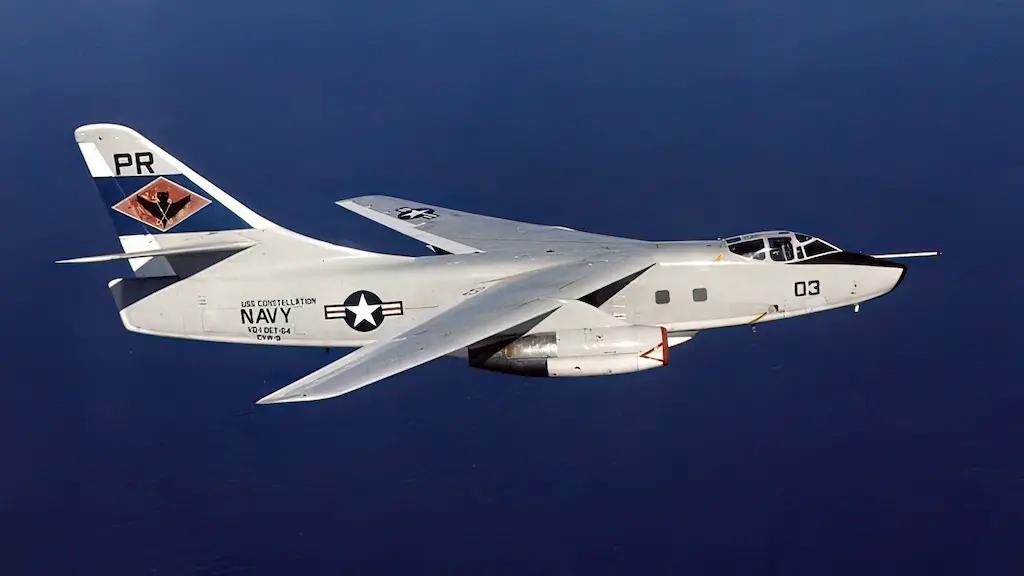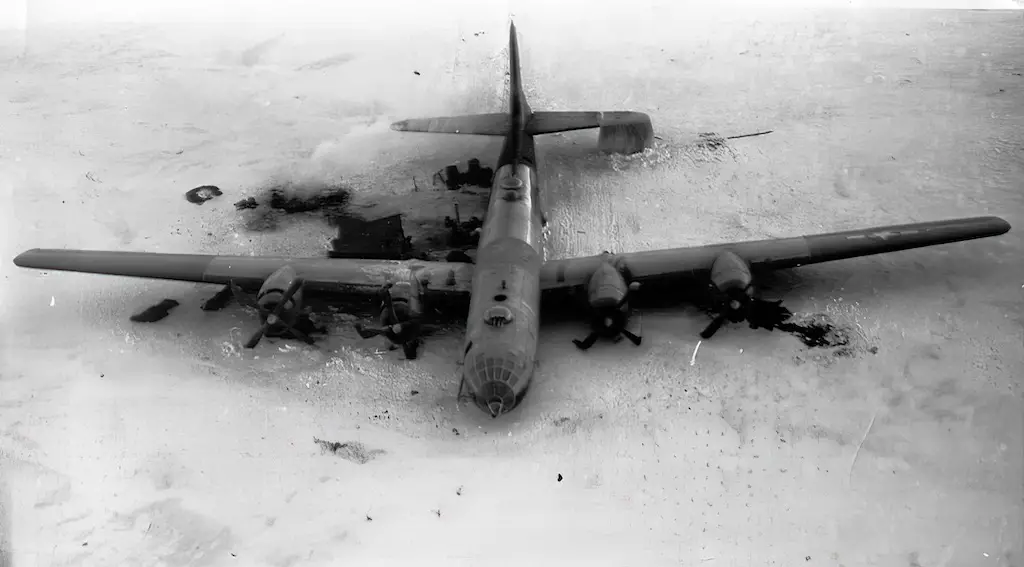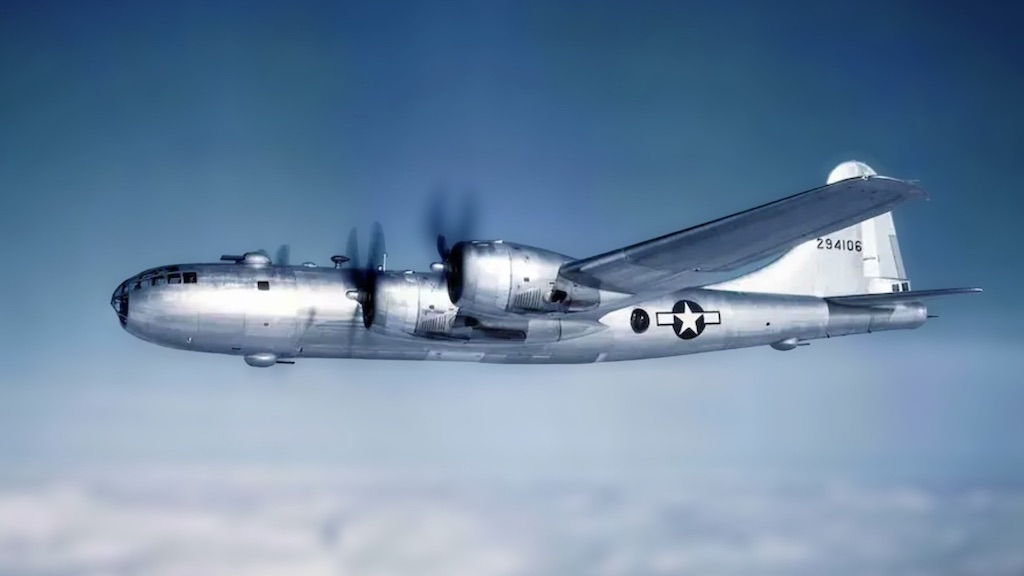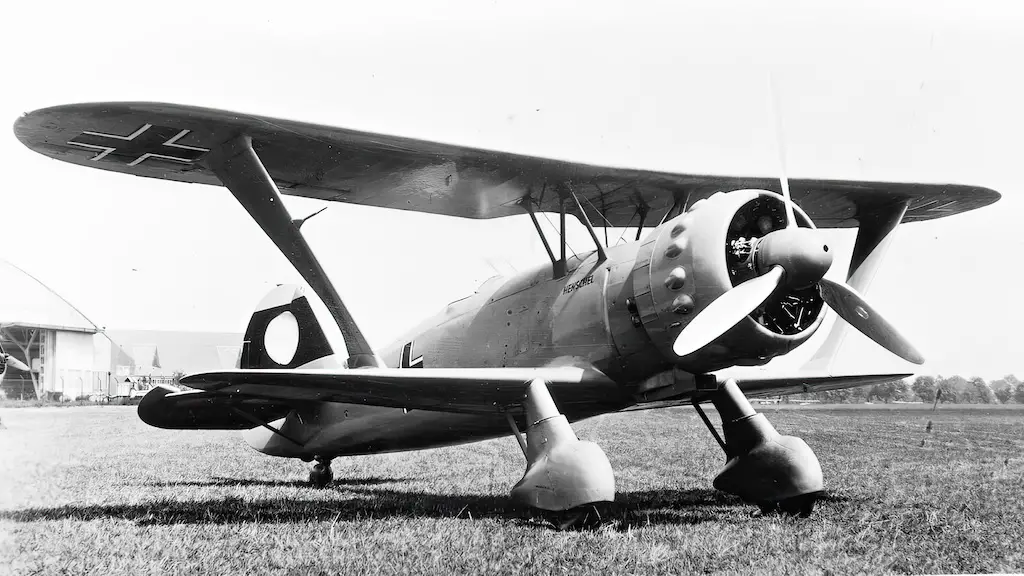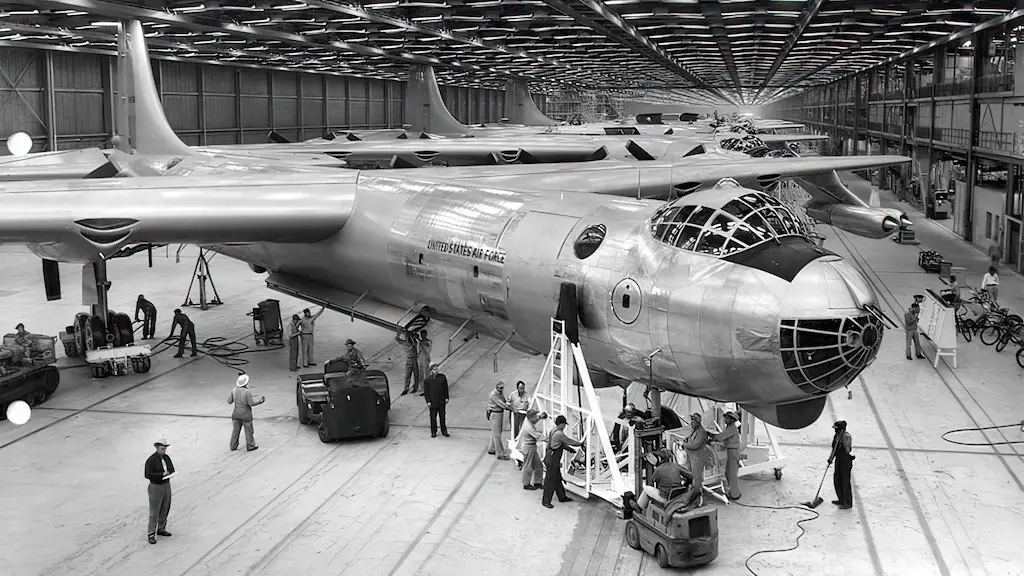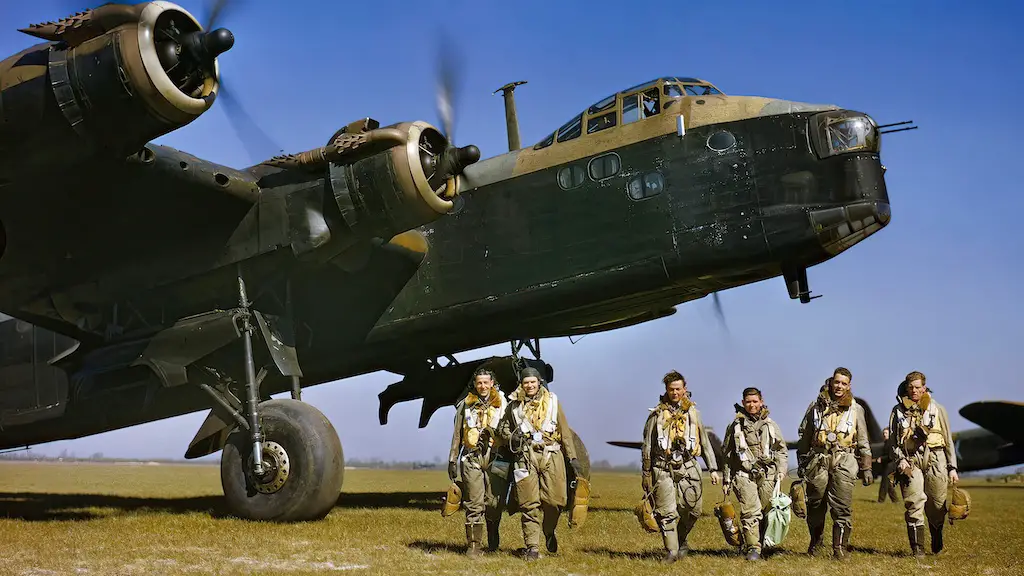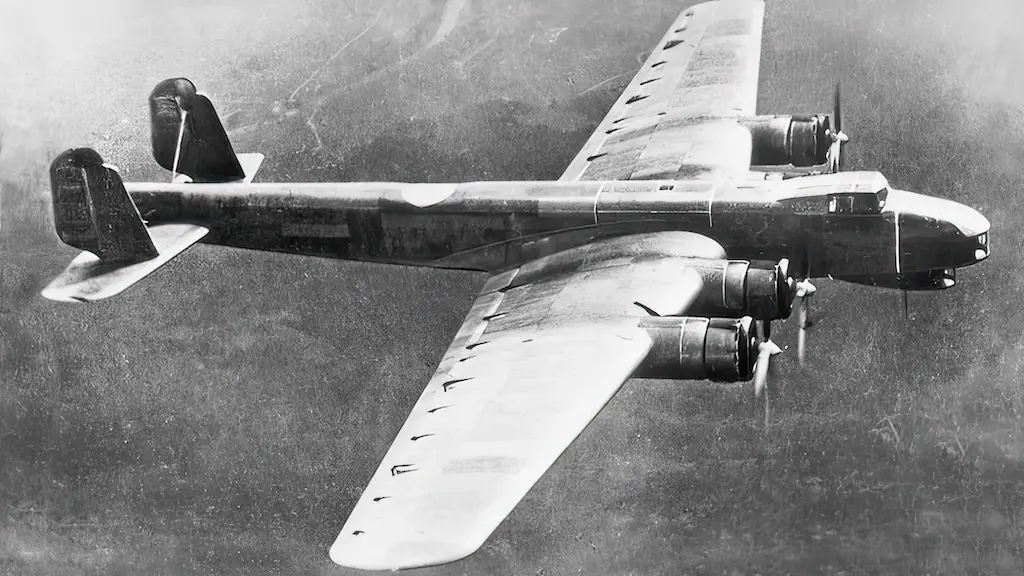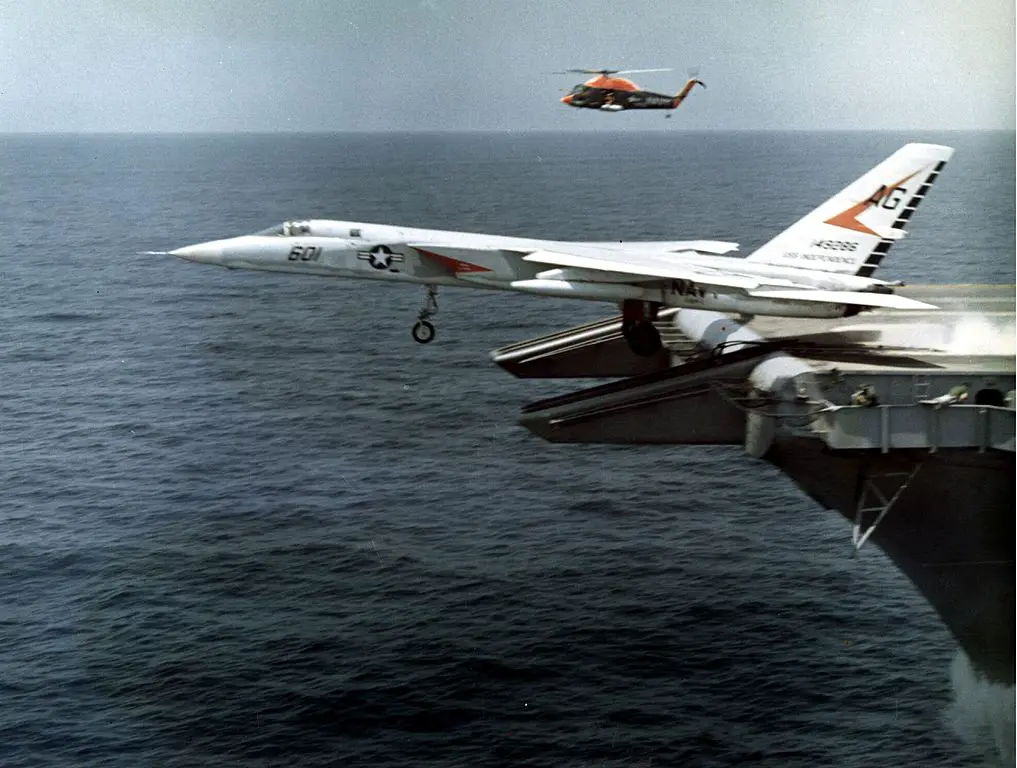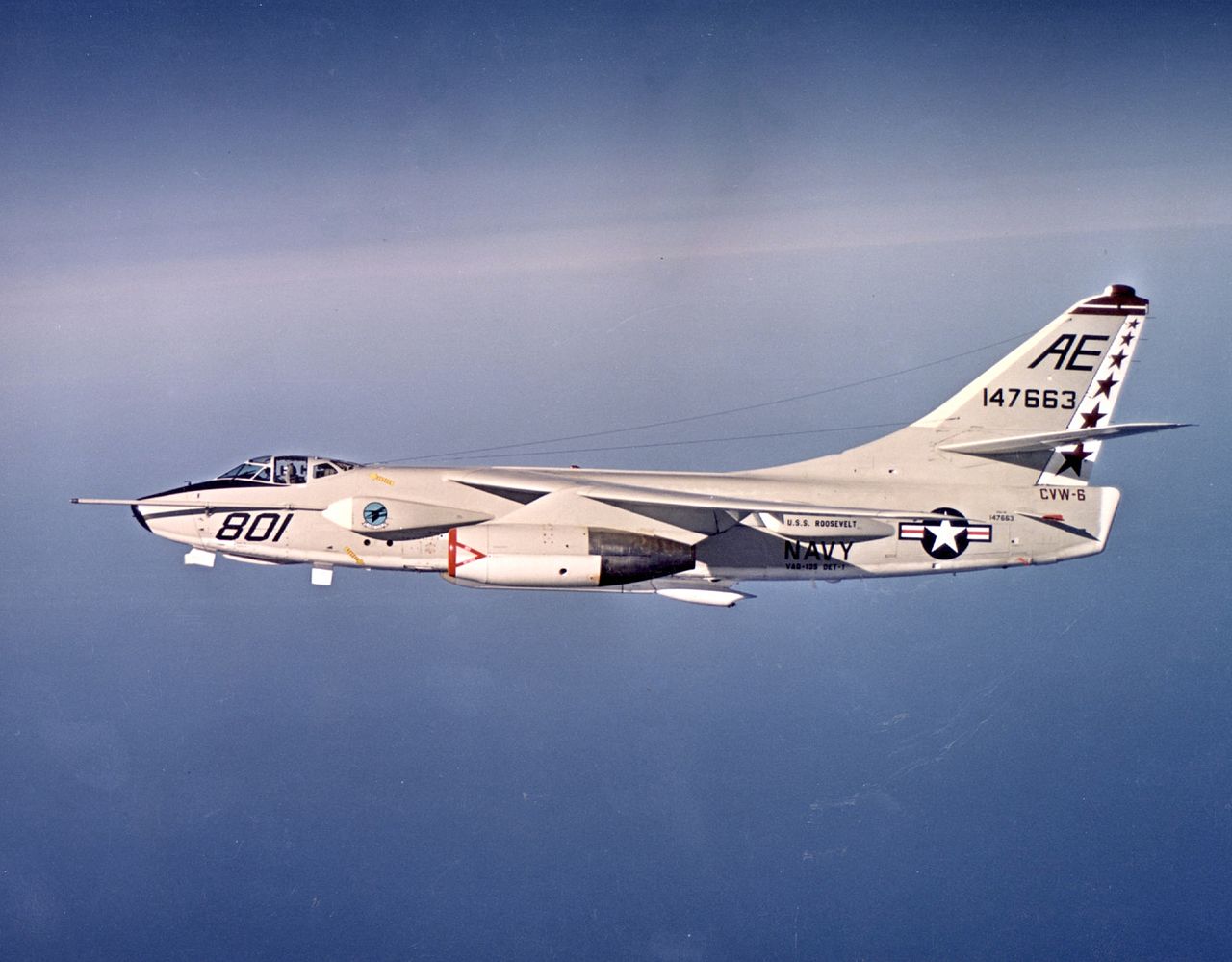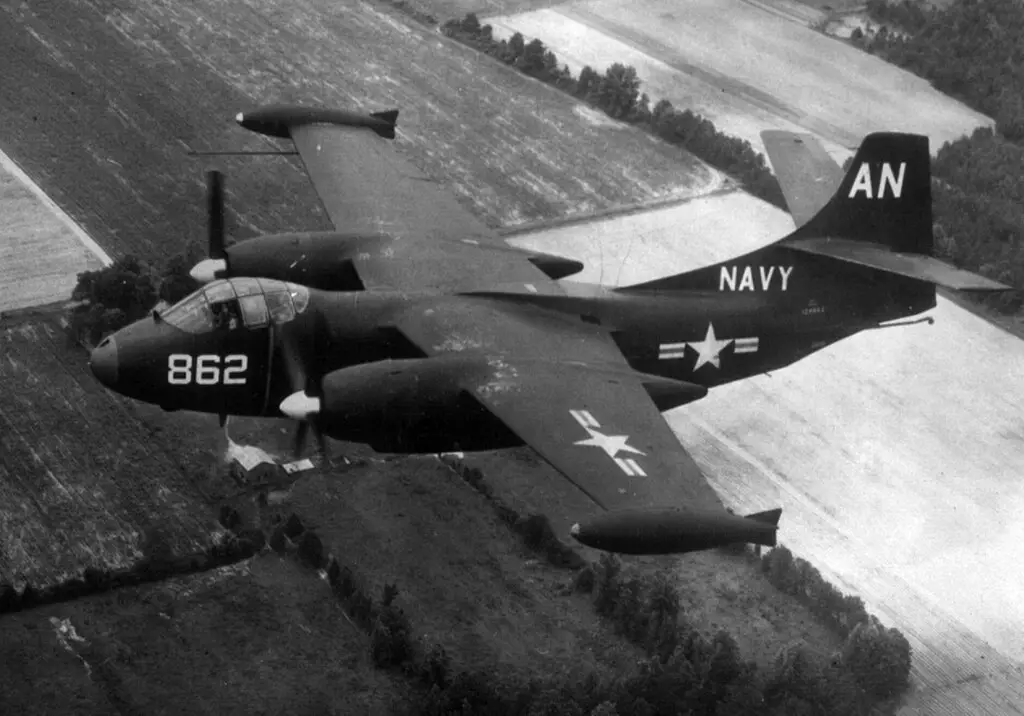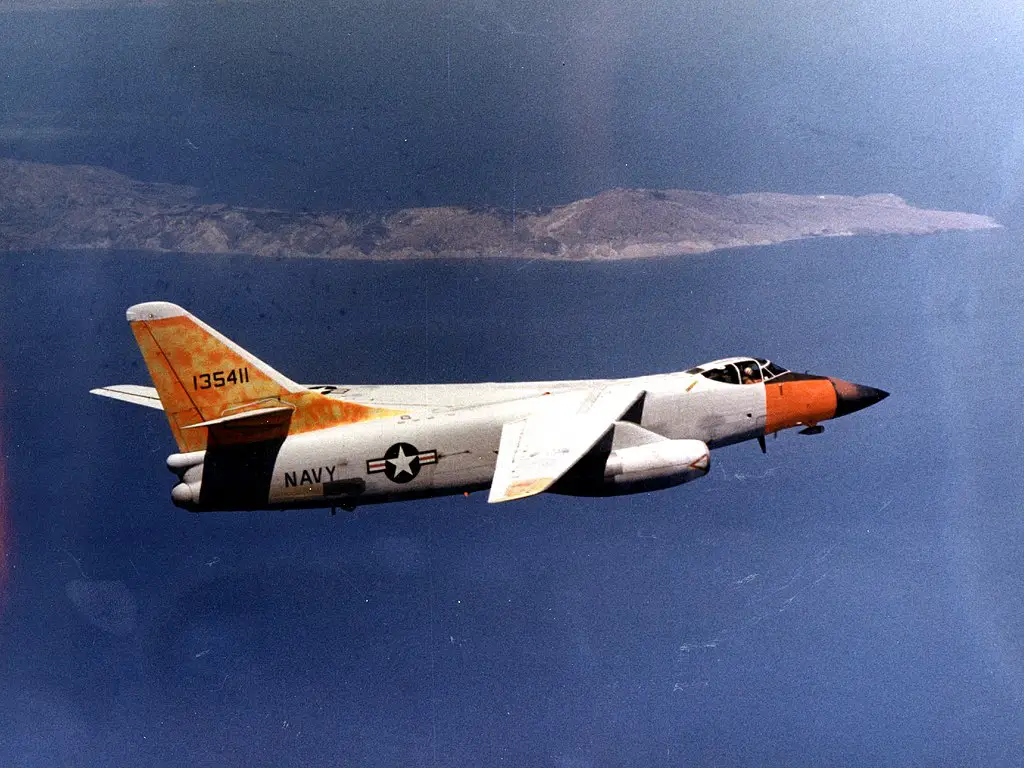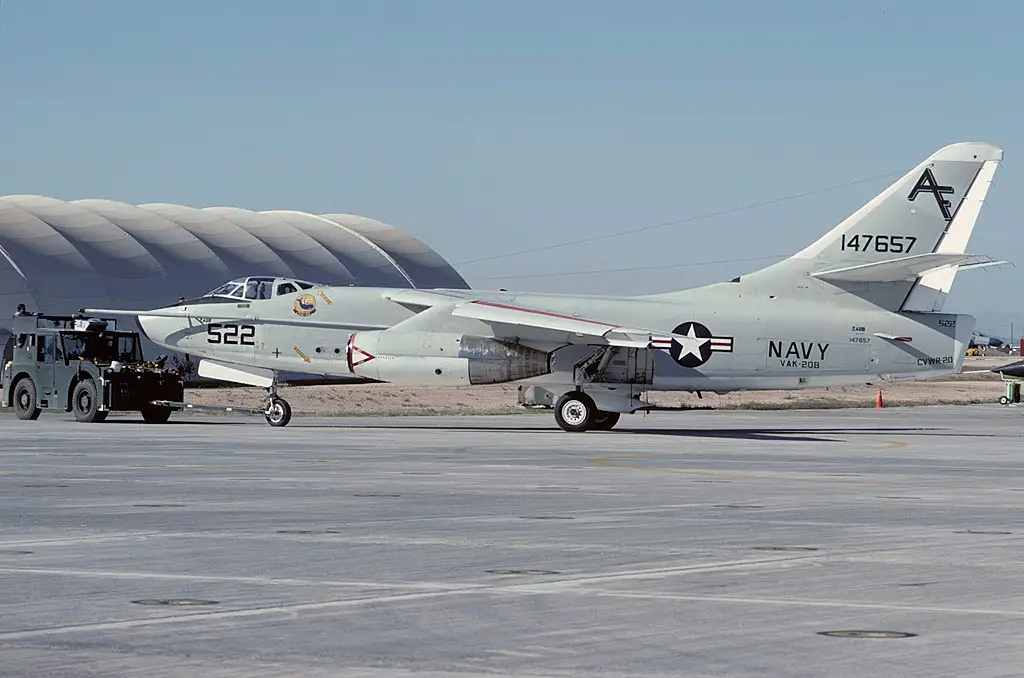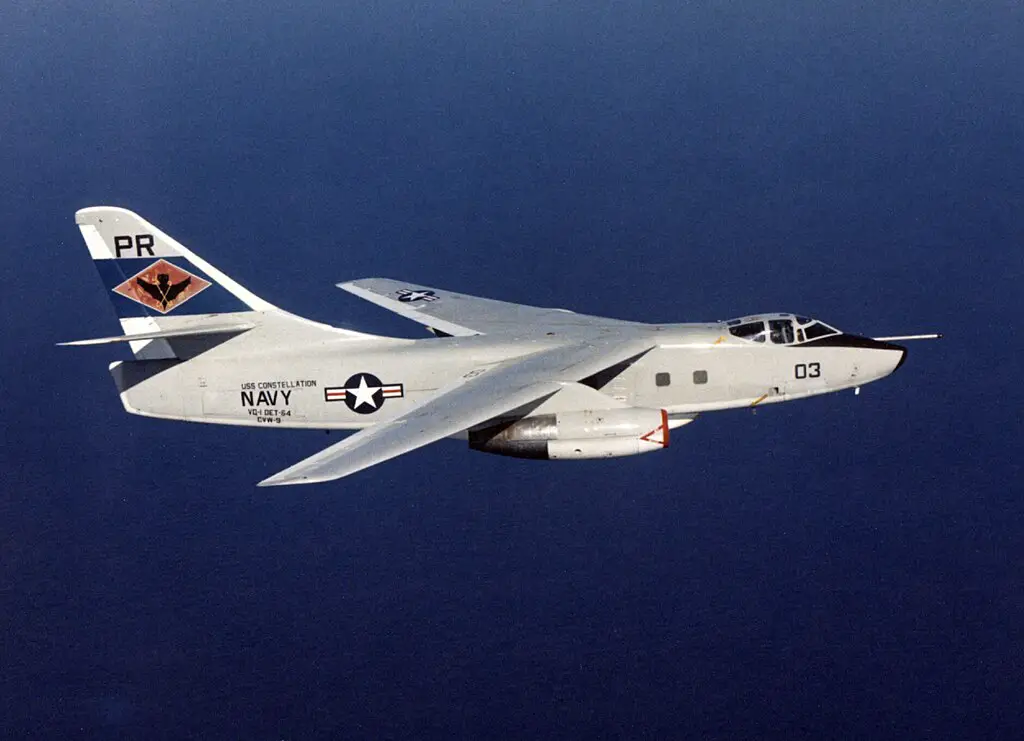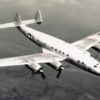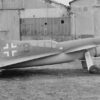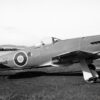Entering service with the US Navy in the mid-1950s, the Douglas A-3 Skywarrior flew off its carriers throughout the rest of the Cold War, becoming one of the longest-serving carrier-based aircraft ever. It even outserved its intended replacement, the North American A-5 Vigilante. During those four decades in service the mighty Skywarrior also remained the heaviest operational aircraft to fly from an aircraft carrier. As dynamics of the Cold War changed, the A-3’s applications changed as well. And in all of its roles the extremely adaptable Skywarrior proved to be a reliable and effective aircraft.
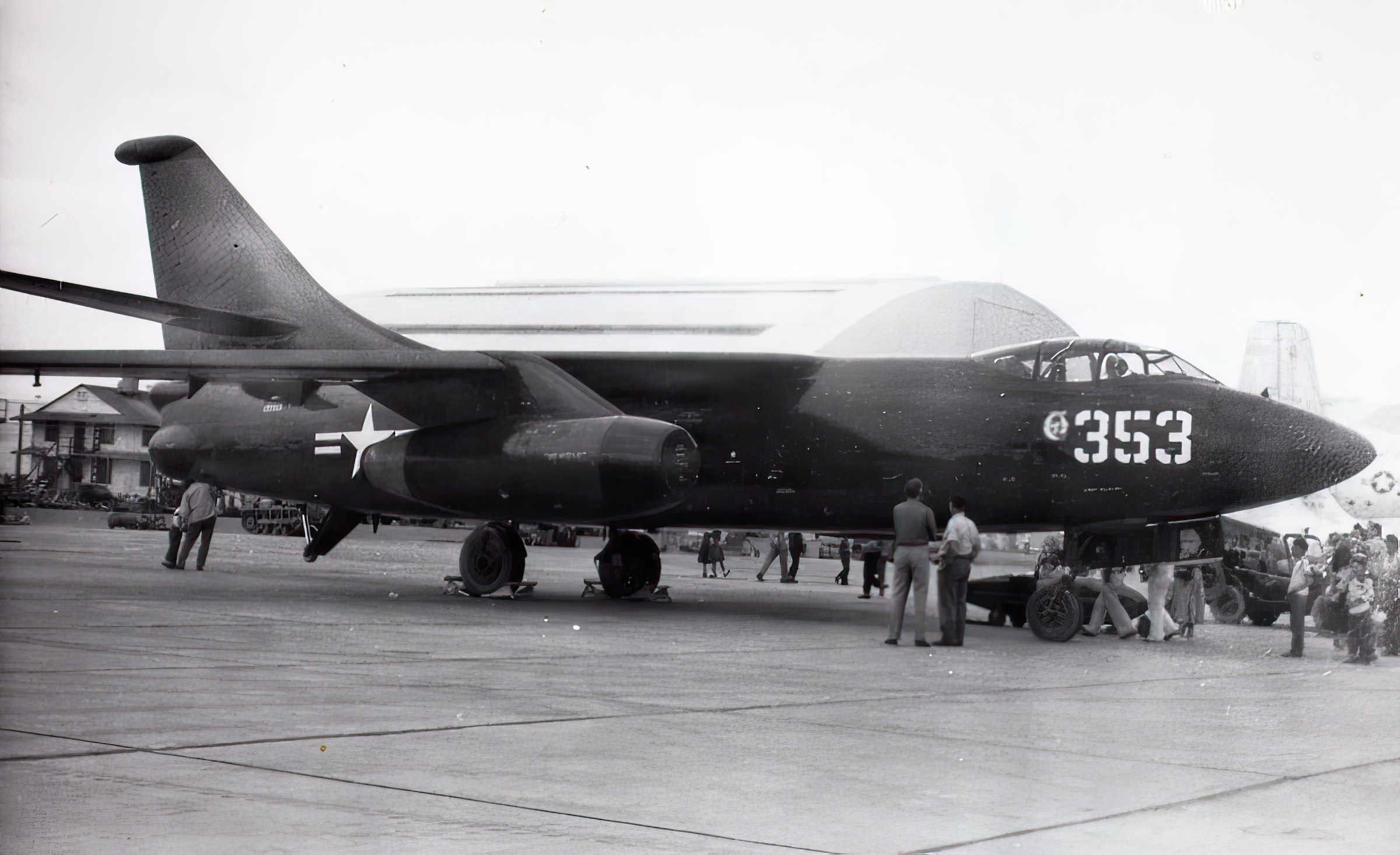
A Carrier-Borne Strategic Bomber
The first two decades of the Cold War were a time when strategic bombers were considered the most important offensive military asset in a possible all-out nuclear war. At first they were operated exclusively by the newly formed US Air Force. The US Navy command, however, thought they needed to have a similar capability. A long-range bomber operating from a carrier would be able to drop nukes on virtually any target, no matter how deep it lay in the enemy territory.
Navy’s first bomber developed with these tasks in mind was the North American AJ Savage. However, it was still a propeller-driven aircraft, which only used an additional jet engine for takeoff and attack run. The Navy wanted a more up-to-date, jet-propelled, fast aircraft to perform those tasks. In 1948, it approved Douglas Aircraft Company’s design, ordering two prototypes. The first of those took to the air in October 1952. However, certain development problems delayed the type’s introduction into service until 1956.
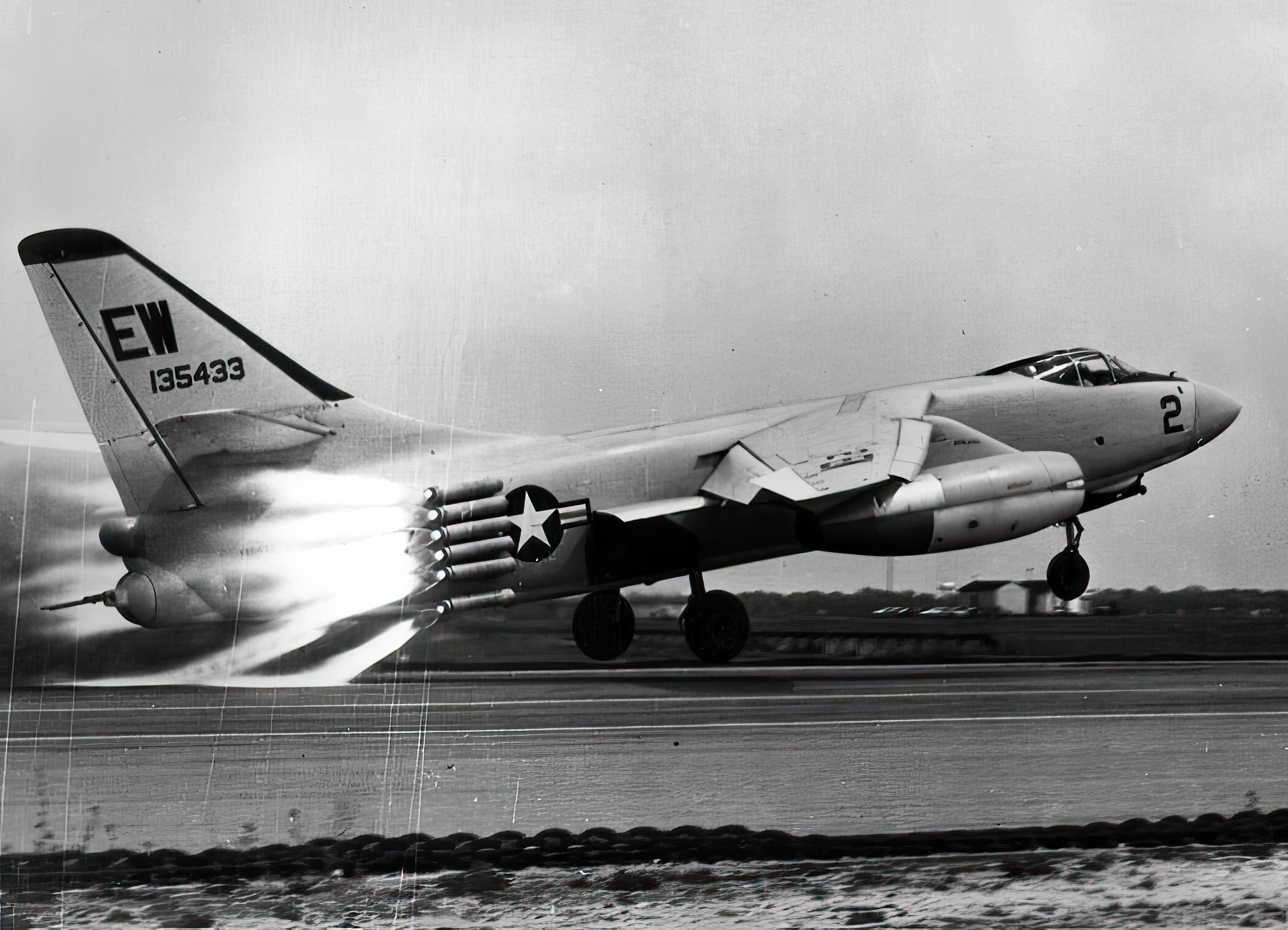
US Navy’s combat whale
With a length of 76 ft, a wingspan of 72 ft, and a gross weight of 70,000 lb (and the maximum weight of a whopping 84,000 lb!), it’s no wonder that the A-3 got the nickname “Whale.” It definitely stood out in the crowd on any US carrier. As a slight compensation to its huge size, the A-3 featured wings folding outboard of the engines to lie almost flat and a tail hinging to starboard. In this configuration the aircraft could be stowed below the deck.
The production aircraft were powered by a pair of Pratt & Whitney J57-P-10 turbojets, producing up to 10,500 lb of thrust each and providing the A-3 with a top speed of 610 mph. The bomber could also use a dozen of JATO bottles for a slightly more confident rocket-assisted takeoff, whenever the amount of payload necessitated such measures.
Changing roles
In 1961, Douglas ended the type’s production run after manufacturing as many as 282 airframes. By that time it was becoming increasingly evident that intercontinental ballistic missiles, rather than strategic bombers would be the decisive tool of nuclear deterrence for decades to come. Yet, this was no reason to write off such a decent aircraft as the Skywarrior.
Instead, the Navy found it quite a few new occupations, such as electronic and photographic reconnaissance, electronic countermeasures, and aerial refueling. In fact, many modified airframes could perform more than one of these functions. With the fuel tank fitted into the rear section of the bomb bay, the tanker variant retained its bombing capability. And the EKA-3B variant combined electronic warfare and tanker duties.
While the standard A3D-2 bombers had crews of two or three, some electronic reconnaissance variants carried up to seven crew members, with the stations of electronic systems operators located in the bomb bay.
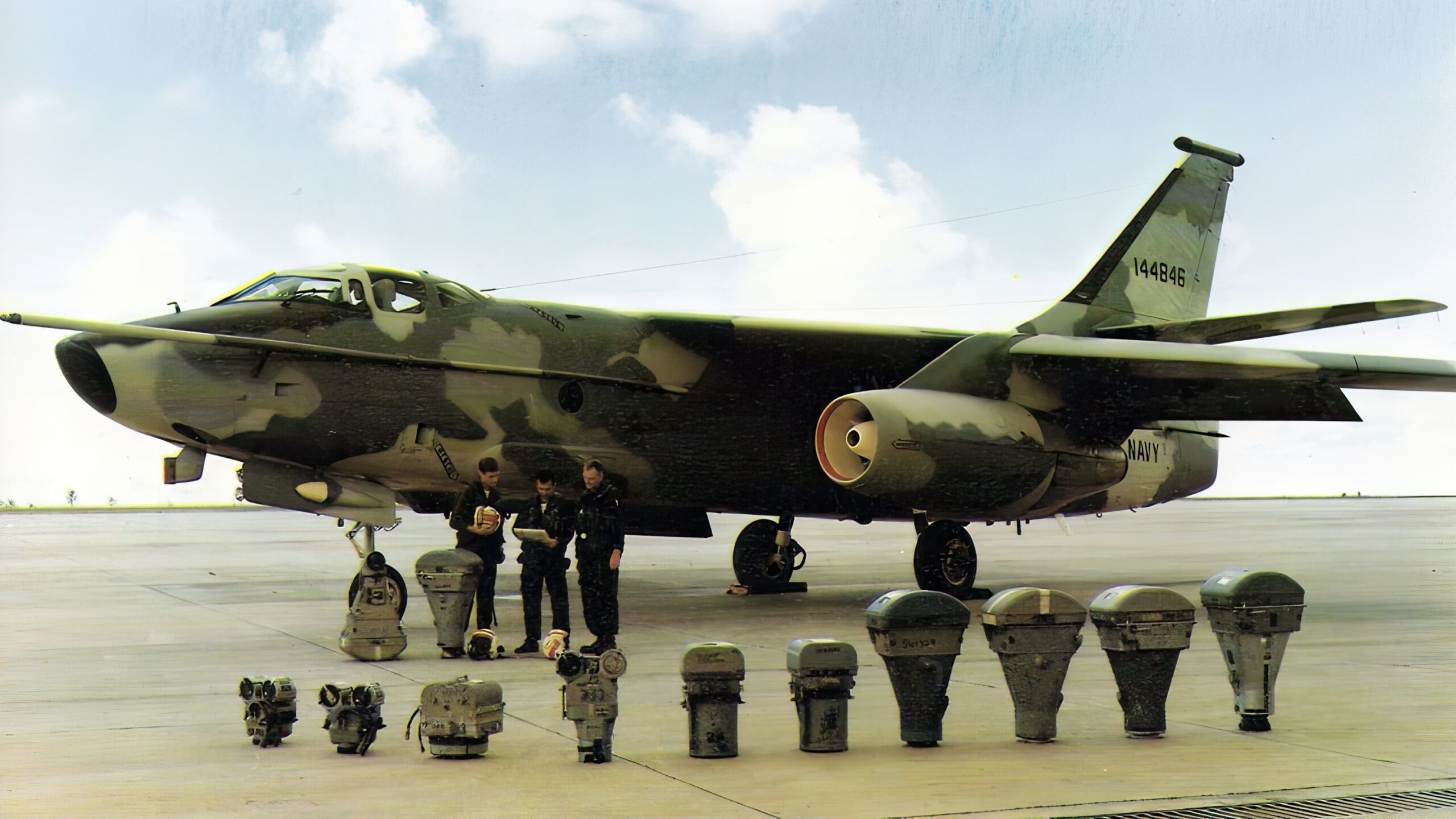
Skywarrior goes to war
Skywarriors were deployed in Vietnam from early on. In fact, they were among the first US aircraft to bomb North Vietnam in 1965, even though bombing raids weren’t Skywarrior’s main mission profile there. The aforementioned EKA-3B, as well as the KA-3B tanker variant, saw quite extensive use in that conflict. EKA-3Bs, in particular, provided intelligence on North Vietnamese radars, as well as jammed them and the enemy’s communication networks.
Toward the end of its career, the Skywarrior also took part in the Gulf War. In 1990, a couple of EA-3s were deployed to Jeddah, Saudi Arabia. From there they flew missions coordinating operations against Iraqi air defense radars. In the fall of 1991, the venerable Whale was finally retired from active service. Still, several airframes went on flying as testbeds for another couple of decades.

